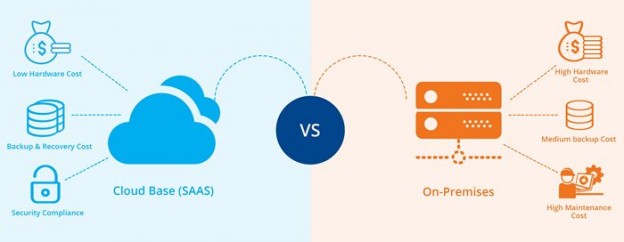Cloud computing technologies are continuously evolving as more and more organizations keep embracing the cloud. Since the cloud can offer many benefits in terms of cost-savings, flexibility and scalability, businesses are keener than ever to leave behind their traditional on-site IT infrastructures and move data to the cloud.
While the cloud may have many benefits to offer it is important for organizations to find the perfect balance between on-site IT and cloud. There are companies, which are able to use cloud technologies seamlessly, but there are also some, which end up paying more to get cloud hosting solutions and the even, expose their data to risks. So, creating the ideal balance between the on-site and cloud architectures is imperative; when there is a hybrid middle path, it is possible to get the best of both worlds.
How to find the right balance between cloud and on-site IT infrastructures:
– Cloud hosting offers many benefits but one should remain realistic and find out the locations where data is getting stored. If you continue to keep unstructured cold data in clouds for a prolonged period, you may be faced with huge bills afterwards. Clients have to pay according to capacity and when the space you use increases, costs are bound to go up. So, what may have seemed to be economical at first eventually becomes expensive. The best way to resolve this issue is to eliminate the obsolete data. This will help to decrease the billing amounts. There are companies which often keep data with them for purposes of cloud backup, compliance and data mining. But, such data is best kept on-site, thereby freeing up space in the cloud.
– When there is a standard migration data has to be shifted from on-site to the virtual environment. This migration typically occurs in stages, assuring an incremental upgrade which is not going to disturb operations by moving big chunks of the IT environment offline. Neither will the staff be forced to re-learn basic tasks in the quickest time possible. Companies which may have restrictions on certain types of data are still able to shift other operations to a cloud without affecting compliance. It is important to make sure that client data is kept in a secure server onsite; however, the back office data like HR or accounting resources can be conveniently shifted to a cloud. So, your company will be successful in moving legacy systems to SaaS and continue to benefit from scalability, mobility and cost-savings while satisfying client demands at the same time.
– Besides its use in compliance matters, this balance is useful even elsewhere, for instance, where municipal services are being offered. For example, Department of Transportation is able to redistribute resources to make innovations smoother by shifting the back-office operations to a cloud together with non-critical data and keeping mission-critical data on secure on-site servers.
– It is true that most cloud vendors will provide built-in security systems along with round-the-clock maintenance of virtual servers so as to avoid data loss incidents or cases of intrusion. However, there is always data present which is found to be too sensitive for cloud storage. Some businesses may also not be open to the idea of collaborating with an outsider to handle IT security concerns. Finally, there are other applications which can be better protected from hackers by storing them on-site.
– Data which must be quickly accessed should ideally not be kept in the cloud. While cloud providers will guarantee a high server uptime, chances of service disruptions cannot be ruled out. In such situations, data which has been stored on premise can always be accessed.
– When trying to find the correct balance between cloud and on-site IT set-ups it is also necessary to understand that you will still need IT personnel even when you may have shifted much of the infrastructure into a cloud. While the daily operations in the cloud may not need your constant attention, cloud hosting solutions cannot run on their own. Your IT staff will now face newer challenges and they will have to hone their skills further. They will have to learn how to use the new technologies to boost productivity and performance. So, they will need to carry out upgrades and help the team to use resources better.
– Daily functions may function through an on-site IT infrastructure but apps and data which have been stored in the cloud can give businesses the agility they need in times of disruptions and emergencies. There may be incidents of fire, floods and storms which can leave the office inaccessible. It is then that the cloud can help you recover data faster through offsite disaster recovery solutions.
– Besides costs, data threats may also appear when you use public cloud solutions. The cloud may be able to provide resilience via erasure coding technique but this is limited and will only protect data when there is hardware crash or an uncommon on-site disaster. The cloud does not have comprehensive means to protect data from human errors, ransomware, malicious attacks etc. When you are dealing with very sensitive data this may pose a problem, for instance, healthcare systems or legal firms. You will require extra protection and such data may be unfit for the cloud.
To sum up, not every legacy application is fit for integration with cloud technologies. There may however be many apps which are designed for public cloud solutions. So, you must plan migration carefully to get favorable results. That way you can also enjoy cost savings and peace of mind.






 Live Chat
Live Chat
I wish to say that this article is awesome, great written and come with almost all important information. I would like to see more posts like this .